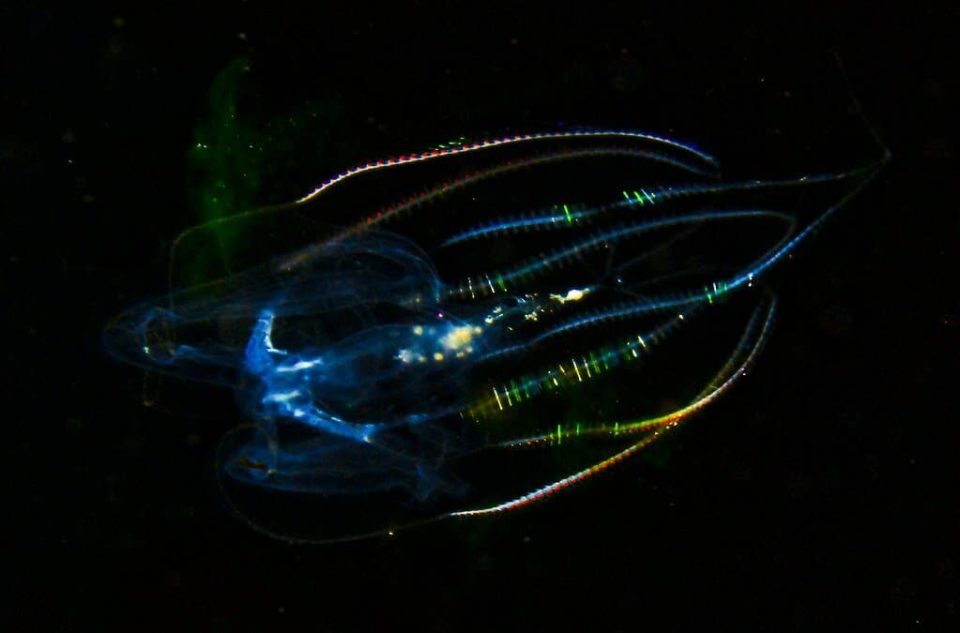
Researchers have discovered that deep sea comb jellies exhibit unique fusion behavior after they have been injured. This allows them to merge into one large jelly with shared body parts like the stomachs and nerves. Such healing is unique and has not been observed in other animals.
Kei Jokura, the evolutionary biologist at Japan’s National Institutes of Natural Science and lead scientist on the study, was thrilled to discover these comb jellies. He took the combined jellies to show his team members in another room.
Comb jellies, or ctenophores, are a unique group of over 100 species of squishy sea creatures. They have tiny, comb-like tentacles. These odd-looking animals resemble jellyfish and can light up through special cells that glow through their transparent bodies.
A recent study on jellies merging
In a recent study released on October 7th in the journal Current Biology, scientists explain an unusual finding during routine research. They were studying a type of comb jellies known as the warty comb jellies, or sea walnut, when they noticed one subject was missing from its tank. After a closer look, they saw one of the jellies was much larger than the others.
Upon even closer inspection, they discovered it was two jellies that had seemingly fused into one.
Researchers believe this joining of two jellies might be a new kind of adaptation that happens when both creatures are injured. To test their idea, they cut tiny parts from 20 jellies and placed them in close proximity to each other. These injuries, in comparison to what comb jellies are susceptible to in the wild, were relatively small. Out of the injured ones, nine pairs ended up merging.
Rapid integration of fused jellies
The injured jellies merged quickly, often becoming fully combined within 24 hours after being placed together. Just two hours after their bodies fused completely, the jellies showed that their nervous systems had also connected. They responded in unison to touches from researchers across their whole fused body.
The researchers also tested whether the stomachs of the fused jellies had merged by feeding them glowing shrimp. When one jelly ate the shrimp, the researchers could see the food moving through both of their stomachs. This indicated that their digestive systems had also merged.
Even though these combined jellies act as one, they are not truly a single organism because they have different DNA and do not possess any shared DNA to pass on to their offspring. The research team is now getting ready to begin a similar study with a different type of comb jelly, called Bolinopsis mikado, to find out if they are also capable of fusing.
